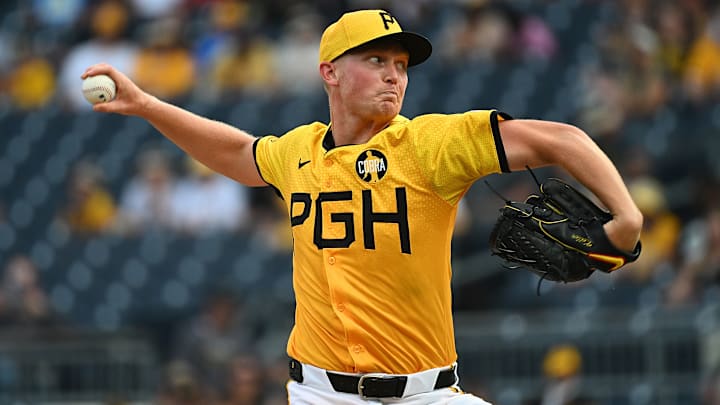Pittsburgh Pirates fans, we need to have a serious talk — not about payroll lies, not about Nutting’s latest “flexibility” fairytale, not even about whether Ben Cherington is capable of a decisive move that doesn’t involve a minor-league flyer. No, this is about something far more important:
The Mitch Keller trade market just got a lot more interesting.
Because if this is the return Sonny Gray just pulled… buckle up.
The Boston Red Sox just acquired Gray — a durable 35-year-old starter with a history of ups and downs — and the St. Louis Cardinals walked away with two legit pitching prospects in Brandon Clarke (a real lefty with future-rotation upside) and Richard Fitts (a big-league–ready depth arm).
Even with St. Louis sending $20 million in cash back to Boston along with Gray, that's still not some bargain-bin, salary-dump package. That is a real return for an aging arm (who Boston is paying $21 million for, against the tax, in 2026).
And you’re telling me a team wouldn’t pay even more for Keller? A 28-year-old? A durable 180–190 inning horse? A pitcher who has back-to-back seasons of being a genuinely above-average starter and is under control through 2028?
If Gray returns two quality arms, then the Keller conversation starts with either one blue-chip prospect or two top-10 organizational guys plus a near-MLB-ready position player. Ben Cherington simply should not accept anything less.
THE FULL DETAILS OF THE SONNY GRAY TRADE:
— Tyler Milliken (@tylermilliken_) November 25, 2025
Red Sox receive: Sonny Gray and $
St. Louis Cardinals receive: LHP Brandon Clarke and RHP Richard Fitts
Via @JeffPassan. pic.twitter.com/OvXOvBWCM8
Pirates' Mitch Keller trade market just got a lot more interesting after NL Central rival's Sonny Gray deal
Gray is a fine pitcher. He’s respected. But he’s also approaching the twilight of his career.
Keller, meanwhile, is in his prime. He is 29 years old, a two-time Opening Day starter, a 200-strikeout threat and the bulldog-type innings-eater that teams beg for in October (not that the Pirates have ever gotten close to testing that theory). He is also under contract at a team-friendly rate ($16.5 million in 2026, $18 million in 2027 and $20 million in 2028).
Teams want certainty? Keller is certainty. Teams want a No. 2 starter for a playoff push who they can keep around? Keller is that guy. No team sees Gray and says, “We’ll build around him.” But a dozen teams could say that about Keller.
If Gray’s value is rising, it means the entire pitching market is tighter than expected. Innings-eaters are scarce, controllable arms are gold, and every contender needs stability. If a 35-year-old with a large AAV yields multiple prospects, then the Pirates should not — and cannot — justify flipping Keller for anything short of a foundational package.
This is the time for Cherington to be greedy. This is the time to be that annoying GM who keeps contenders on hold. This is the time to say, "Pay what he’s worth. And if you don’t like it? He’ll be our No. 2 behind Paul Skenes again next season." Because if the worst-case scenario is Keller still pitching for you in 2026, that's not a punishment; it's a blessing.
The Gray trade just reset the market, and it did so in Pittsburgh's favor. If the Red Sox paid what they did for an older, shorter-term starter, then the Pirates have every right to demand top prospects, high-ceiling arms, MLB-ready contributors and a massive haul worthy of a frontline rotation piece. Anything less is malpractice.
Fans have spent years watching the Pirates undervalue their own talent, but this is the rare moment where the market won’t let them. If Pittsburgh trades Keller, fans should expect — and demand — a return so strong that it instantly alters the organization’s trajectory. Otherwise, keep him.
